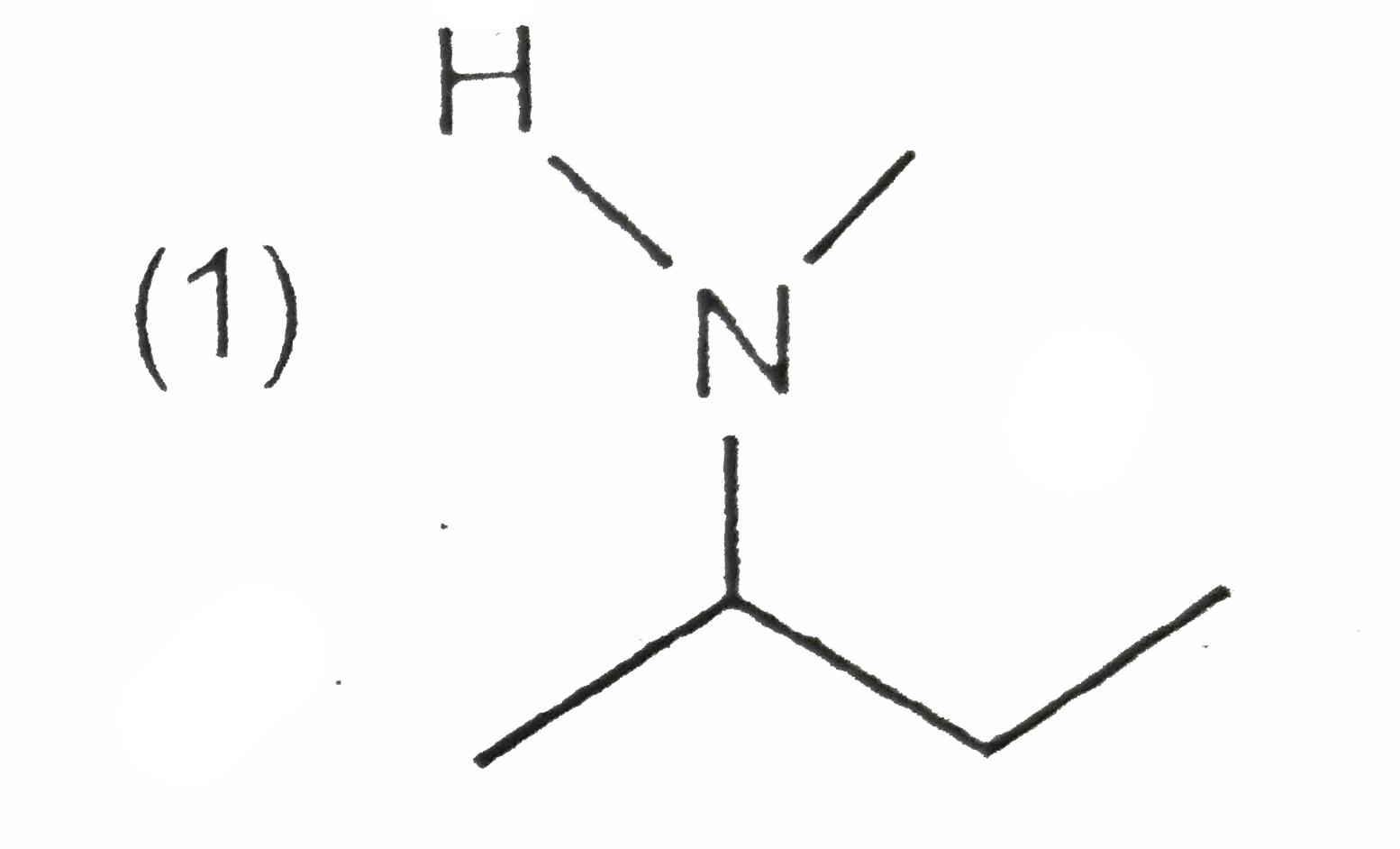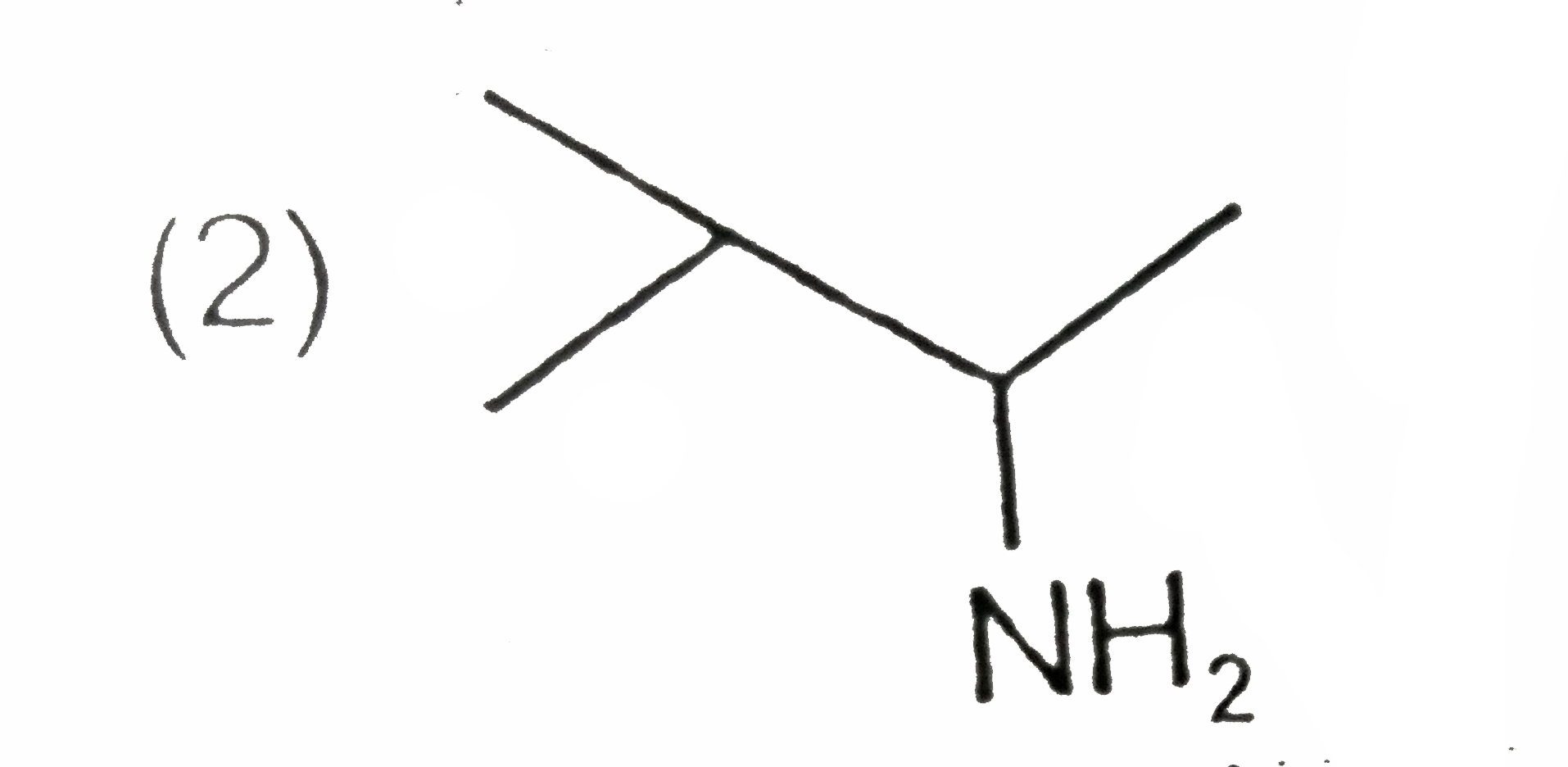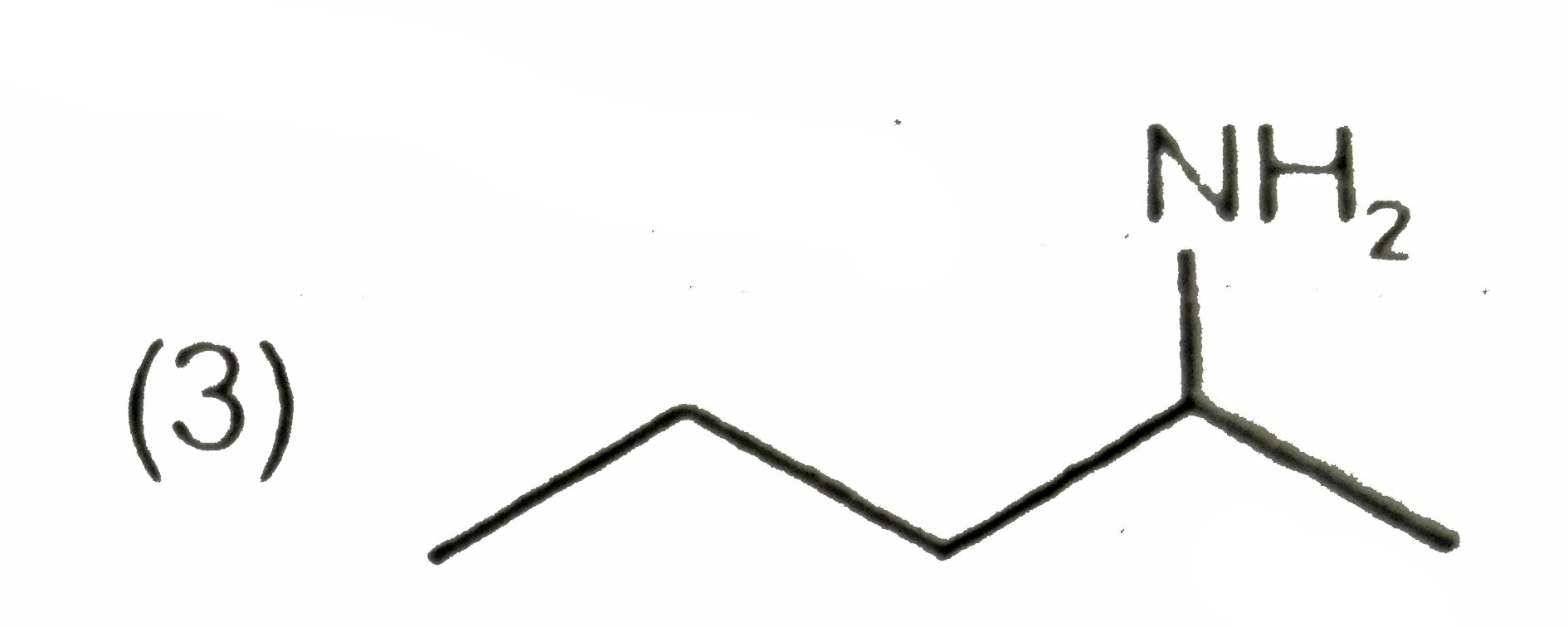C5H13N reacts with HNO2 to give an optically active alcohol The compound is
Pentan-1-amine
Pentan-2-amine
N,N-dimethylpropan-2-amine
N-methylbutan-2-amine
The correct Answer is:B
To solve the problem, we need to identify the compound C5H13N that reacts with HNO2 to yield an optically active alcohol. Here’s a step-by-step solution:
Step 1: Identify the Structure of C5H13N
C5H13N indicates a compound with five carbon atoms, thirteen hydrogen atoms, and one nitrogen atom. The most likely structure for this compound is an amine, specifically a secondary or tertiary amine, since it has a nitrogen atom that can be converted into an alcohol.
Step 2: Determine Possible Amines
The amine that fits the formula C5H13N could be:
- Pentan-1-amine (1-aminopentane)
- Pentan-2-amine (2-aminopentane)
- Pentan-3-amine (3-aminopentane)
- Other branched amines
Step 3: React with HNO2
When an amine reacts with nitrous acid (HNO2), it typically forms an alcohol. The reaction can be summarized as follows:
- The amine (R-NH2) reacts with HNO2 to form an alcohol (R-OH) and nitrogen gas (N2).
Step 4: Identify Optically Active Alcohol
For the resulting alcohol to be optically active, it must have a chiral center. Among the possible amines, 2-aminopentane (pentan-2-amine) is a suitable candidate because it has a chiral center at the second carbon atom.
Step 5: Write the Reaction
The reaction of 2-aminopentane with HNO2 can be illustrated as:
C5H13N (2-aminopentane)+HNO2→C5H12O (2-pentanol)+N2+H2O
Step 6: Conclusion
The compound C5H13N that reacts with HNO2 to give an optically active alcohol is 2-aminopentane (or pentan-2-amine). The resulting alcohol is 2-pentanol, which is optically active due to the presence of a chiral center.
Final Answer
The compound is 2-aminopentane (pentan-2-amine).
---
C5H13N indicates a compound with five carbon atoms, thirteen hydrogen atoms, and one nitrogen atom. The most likely structure for this compound is an amine, specifically a secondary or tertiary amine, since it has a nitrogen atom that can be converted into an alcohol.
The amine that fits the formula C5H13N could be:
- Pentan-1-amine (1-aminopentane)
- Pentan-2-amine (2-aminopentane)
- Pentan-3-amine (3-aminopentane)
- Other branched amines
When an amine reacts with nitrous acid (HNO2), it typically forms an alcohol. The reaction can be summarized as follows:
- The amine (R-NH2) reacts with HNO2 to form an alcohol (R-OH) and nitrogen gas (N2).
For the resulting alcohol to be optically active, it must have a chiral center. Among the possible amines, 2-aminopentane (pentan-2-amine) is a suitable candidate because it has a chiral center at the second carbon atom.
The reaction of 2-aminopentane with HNO2 can be illustrated as:
C5H13N (2-aminopentane)+HNO2→C5H12O (2-pentanol)+N2+H2O
The compound C5H13N that reacts with HNO2 to give an optically active alcohol is 2-aminopentane (or pentan-2-amine). The resulting alcohol is 2-pentanol, which is optically active due to the presence of a chiral center.
The compound is 2-aminopentane (pentan-2-amine).
Topper's Solved these Questions
- NITROGEN CONTAINING COMPOUNDS BOOK - ERRORLESS CHAPTER - NITROGEN CONTAINING COMPOUNDS EXERCISE - JEE SECTION ONLY ONE CHOICE CORRECT ANSWER
53 Videos
- NITROGEN CONTAINING COMPOUNDS BOOK - ERRORLESS CHAPTER - NITROGEN CONTAINING COMPOUNDS EXERCISE - REASONING TYPE QUESTION
3 Videos
- NITROGEN CONTAINING COMPOUNDS BOOK - ERRORLESS CHAPTER - NITROGEN CONTAINING COMPOUNDS EXERCISE - TESTS FOR NITROGEN CONTAINING COMPOUNDS
11 Videos
- IONIC EQUILIBRIUMBOOK - ERRORLESS CHAPTER - IONIC EQUILIBRIUMEXERCISE - JS Jee Section (JEE Advanced (Numeric answer type question))
1 Videos
- NUCLEAR CHEMISTRY BOOK - ERRORLESS CHAPTER - NUCLEAR CHEMISTRY EXERCISE - JEE SECTION (Matrix Match Type Questions)
2 Videos
Similar Questions
Optically active isomer (A) of (C5H9Cl) on treatment with one mole of H2 gives an optically inactive compound (B) compound (A) will be :
View SolutionOptically active amine having molecular formula C5H13N on reaction with NaNO2+HCI produces, 3∘ optically inative alcohol. Find out structures of amines:
View Solution
Knowledge Check
R3N reacts with HNO2 to give
AR3NH−NO2BR3NOCR3N=N−ODvisibly no changeAn optically active compound [A] C5H13N reacts with alkaline CHCl3 to give an optically active, compound [B]. [A] also reacts with nitrous acid to give an optically inactive alcohol [C] C5H11OH as the major product. What would be the structure of [A]?
A B
B C
C D
D
Assertion: The amine
H3C−CH3∣CH−C∣NH2H−CH3
Upon reaction with HNO2 will give six optically active alcoholic products
Reason: During the reaction there is formation of carbocationic intermediate which may rearrange.AIf both assertion and reason are correct, and reason is the correct explanation of the assertionBif both assertion and reason are correct, but reason is NOT the correct explanation of the assertion.CIf assertion is Correct, but reason in incorrect.DIf assertion is Incorrect, but reason is correct
An optically inactive amine (A) C4H11N on treatment with HNO2 gives an alcohol (B). The compound (B) on heating with conc. H2SO4 at 453 K gives an alkene ( C). The ( C) on treatment with HBr gives on optical active compound (D) having molecular formula C4H9Br. Identify (A).
View SolutionAn organic compound (A) C9H13N dissolves in dil. HCl and releases N2 with HNO2 giving an optically active alcohol. Alcohol on oxidation gives dicarboxylic acid, which on heating form anhydride. The organic compound (A) is
View SolutionAn organic compound (A) C9H13N dissolves in dil. HCI and releases N2 with HNO2 giving an optically active alcohol. Alcohol ox oxidation gives dicarboxylic acid, which on heating form anhydride. The organic compound 'A' is:
View SolutionAn optical inactive amine (A) C4H11N on treatment with HNO2 give an alcohol (B ) , The Compound (B ) on heating with conc. H2SO4 at 453 K give an alkene ( C ) . The C on treatment with HBr give an optical active compound (D ) having molecular formula C4H9 Br. Identify (A )
View SolutionAn optical inactive amine (A) C4H11N on treatment with HNO2 give an alchol (B) . The alcohol (B) on heating with conc. H2SO4 at 453K 1- butene . Identify (A).
View Solution
